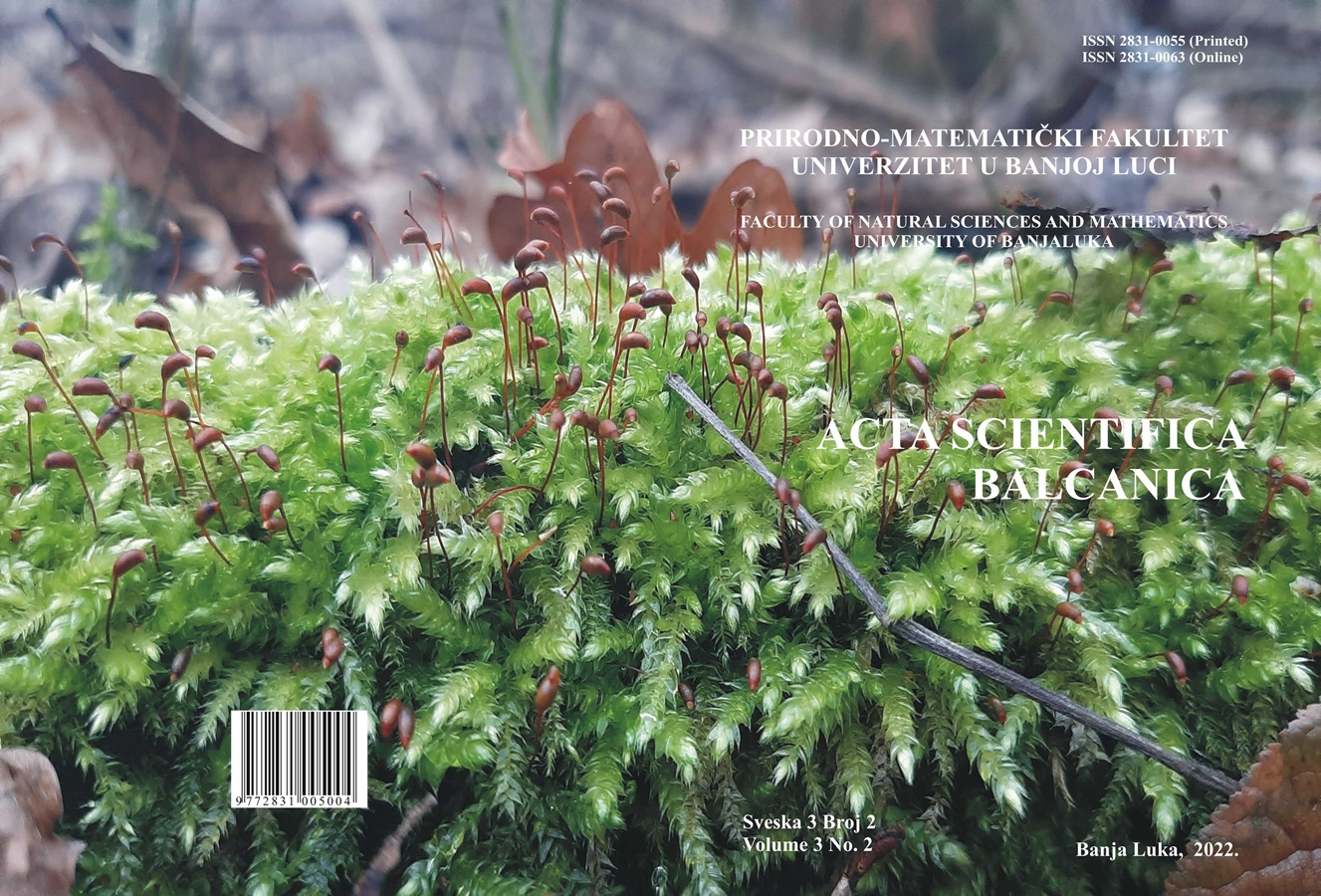TREATISE ON ASSESSMENT OF RISK ON AQUATIC ECOSYSTEM OF THE RIVER JADAR OWING TO EXPLOITATION OF BORON AND LITHIUM IN THE PROJECT „JADAR“
DOI:
https://doi.org/10.7251/ASB220302023SAbstract
Risk assessment of the aquatic ecosystem of the River Jadar is based on the composition and amount of wastewater that is to be processed and released into the stream. This study aimed to assess the effects of untreated wastewater on aquatic ecosystem components, presumably fishes, by simulating the accident. Methodology relied exclusively on the published documents that investors, “Rio Tinto'' and “Rio Sava Exploration” d.o.o., issued about the boron and lithium mine in the Jadar region of Serbia as the only source of the publicly available data about concentration of mineral contents in underground water. Results revealed that concentrations of boron in a range of 3.43-12058.83 mg l-1 and those of lithium in a range of 0.70-2452.50 mg l-1 in a stream water of the River Jadar would pose a great risk to aquatic ecosystem in any lapse in proper processing of wastewater at either average low-, medium-, or high-water levels. Such high contents would inevitably cause toxic, genotoxic and other pathological effects on aquatic organisms. Records published on the relevant in vitro models reveal that if the concentration of boron and lithium in the stream water would exceed safe concentrations, the ecosystem would be seriously harmed, especially for the fish that are most sensitive to metal pollution. Due to a lack of actual referent in-field data, it is difficult to predict either the extent of harmful effects on downstream sections, or the period the ecosystem would need to recover from high levels of pollution.
